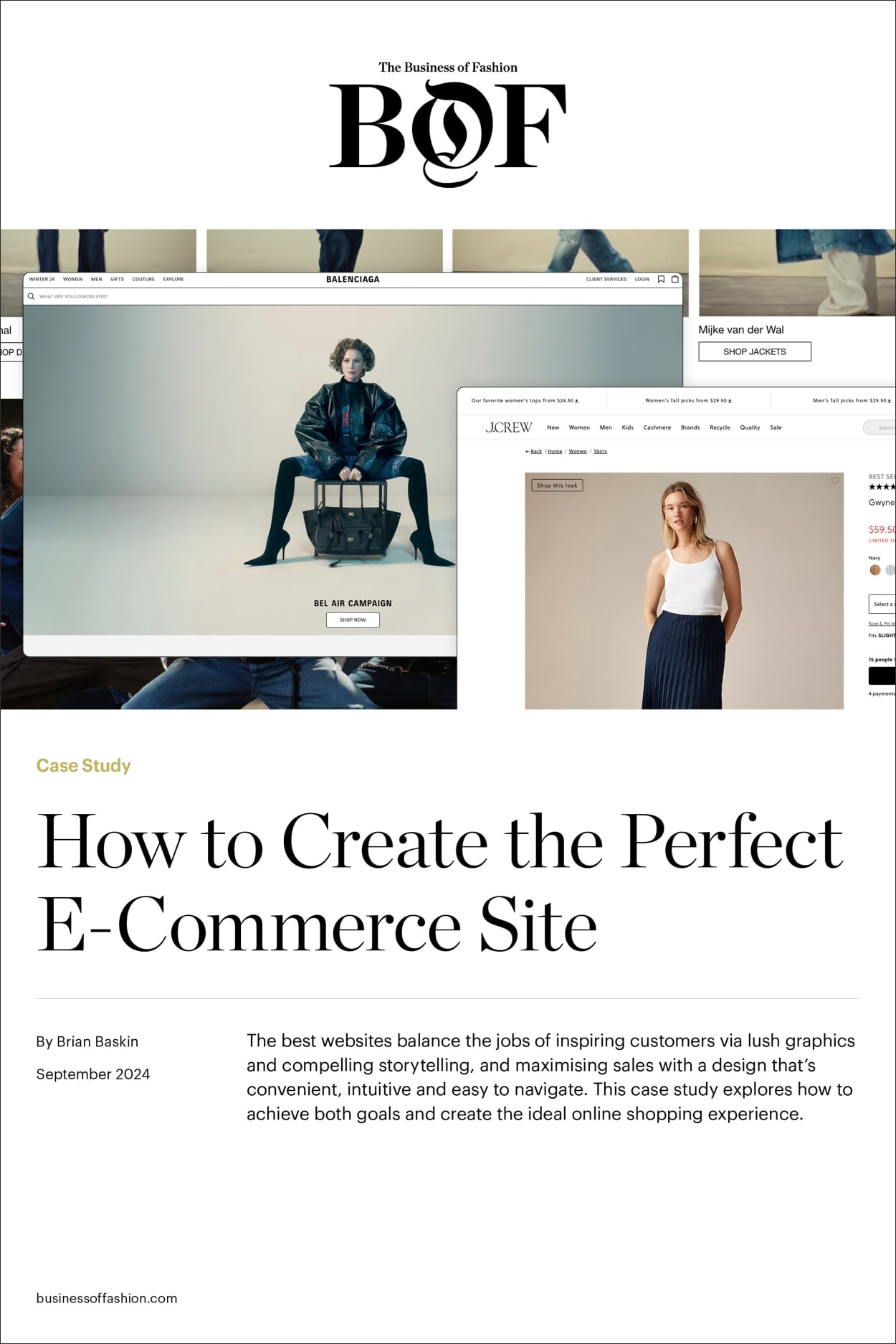
A brand’s website needs to perform one of retail’s most delicate balancing acts. Ideally, it should tell a brand’s story and simultaneously maximise e-commerce revenue with a convenient and intuitive product-discovery and checkout process.
In reality, brands rarely manage to accomplish both of those missions. Often, fashion e-commerce sites lean too heavily in one direction or the other: Lush graphics, videos and immersive storytelling might captivate and inspire one customer while alienating another who wants to quickly find and purchase a dress to wear to their sister’s wedding. Swing too far in the other direction and brands risk limiting their digital homes to Amazon-style online experiences with little in the way of personality.
“The website very much does need to tell the brand story and to bring people into the world of the brand,” said Tammy Smulders, chief executive at Trends&Culture, a creative agency that has designed websites or apps for Bottega Veneta, Off-White, Ganni and other companies. “But at the same time, for most brands, the website is their single biggest store.”
To further muddy the waters, where brands once viewed their site as the centre of their online world, today they are far more likely to make their deepest connections with consumers on social media. Rather than being where customers start to learn about a label, the site is now the end of their journey through a brand’s universe — a journey that ideally ends with a sale.
Meanwhile, the commerce side of the website has become more and more central. Shoppers frequently arrive at brands’ and retailers’ sites through side doors, like Google searches and social media, that take them directly to product pages. Perhaps one in five site visitors actually type a brand’s URL into their browser, Smulders said (though she added that for a buzzy, well-known label the share could be as high as 50 percent). For many customers, the product page may be their first or only impression of the brand, and where a rising share of consumers decide whether or not to make a purchase.
In the US, 38 percent of apparel sales took place online in 2023, up from 27 percent in 2019, according to Euromonitor. That figure is even higher in parts of Asia.
Yet despite the critical importance of a brand’s website, many companies are still failing to provide shoppers with the best experience. Baymard Institute, a research and consulting firm specialising in web design, found that 94 percent of e-commerce sites fall short in at least one of five key areas, such as search and navigating product pages. Those remaining 6 percent can’t rest on their laurels; today’s best practices when it comes to both aesthetics and the user experience start to look “dusty” within three years, and require a total overhaul within five, Smulders said.
This case study will break down the two site missions — storytelling and commerce — into their components and explore how an organisation can achieve success on each front, focusing on the customer journey up until checkout (for more on that crucial last element, please see BoF’s December 2022 case study, “How to Take the Friction Out of Commerce”).
For insight, The Business of Fashion consulted leading web design and branding experts who have worked with companies in every corner of the industry, from fast fashion to luxury, apparel, accessories and even beauty. This report will also example how one company, J.Crew, approaches fundamental elements of its website, including discovery and the all-important product page.



